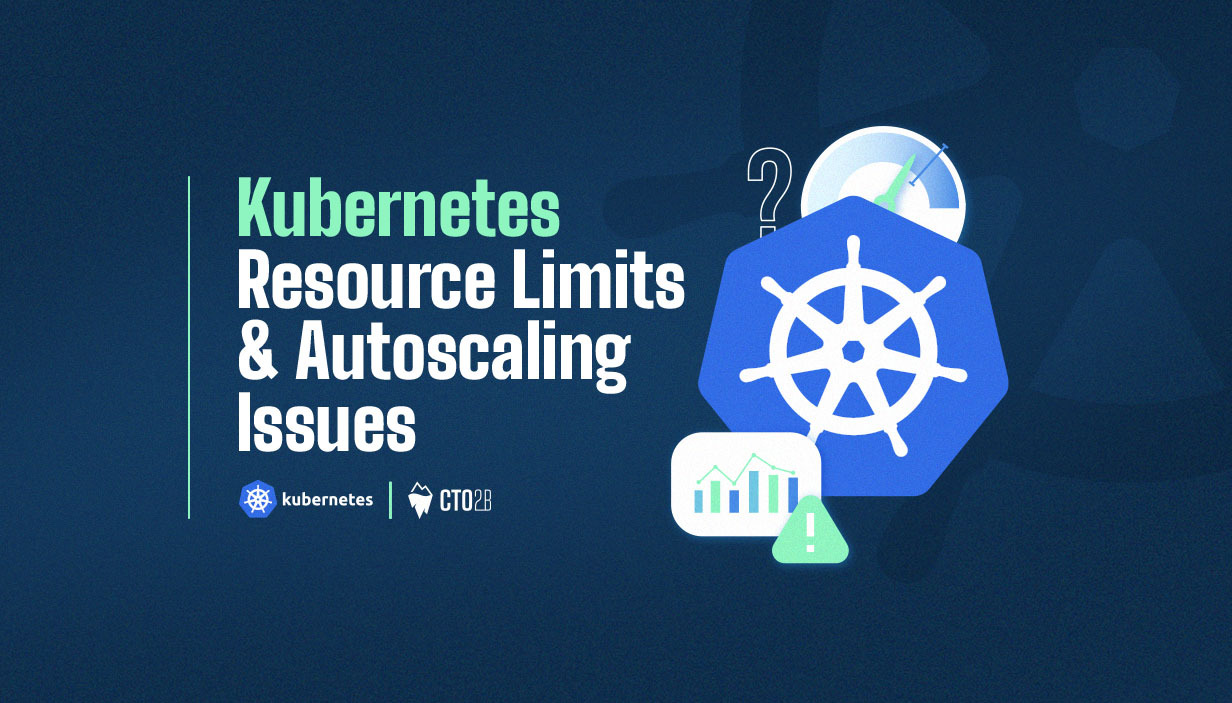Kubernetes has revolutionized how we deploy, manage, and scale containerized applications. One key aspect of running efficient workloads in a Kubernetes cluster is understanding and configuring Kubernetes CPU limits. In this comprehensive guide, we’ll break down what CPU limits are in Kubernetes, how they work, their pros and cons, and best practices for optimizing your overall system performance and cluster resources.
What Are Kubernetes CPU Limits?
Kubernetes CPU limits define the maximum amount of CPU resources a container can use on a node. This ensures that no single container can monopolize the CPU, helping maintain fair CPU resource usage and defined resource boundaries across your workloads. These limits are crucial for resource management and help ensure the system remains stable.
CPU Requests vs. CPU Limits
- CPU requests specify the minimum amount of CPU guaranteed for a container. Kubernetes uses this value to schedule pods onto nodes with enough CPU resources available.
- CPU limits cap the maximum amount of CPU a container can use. If a container exceeds the limit, Kubernetes applies CPU throttling to restrict its usage.
Understanding the difference between CPU requests and limits is crucial for effective resource allocation and pod scheduling.
Why Set CPU Limits?
CPU limits are mainly used to:
- Prevent containers from consuming excessive CPU and affecting other containers running on the same node
- Maintain predictable application performance and system performance
- Support multi-tenant environments where fair CPU resource usage is essential
How Do Kubernetes CPU Limits Work?
Kubernetes leverages the Linux container runtime and cgroups (control groups) to enforce CPU limits. Two key parameters are used:
- cpu.cfs_period_us: The time window for enforcing CPU quota (default: 100ms)
- cpu.cfs_quota_us: The total CPU time a container can use within this period
When a container exceeds its CPU limit, the kernel temporarily limits the container’s CPU cycles, delaying further execution until more CPU cycles become available.
What is CPU Throttling?
CPU throttling occurs when a container attempts to use more CPU than its limit allows. The container runtime restricts its CPU shares, causing the application to slow down. This can degrade performance, especially for compute resources that are multi-threaded or latency-sensitive.
Pros and Cons of Setting CPU Limits
Benefits of CPU Limits
- Resource Isolation: Prevents one container from consuming excessive CPU and impacting others on the same node.
- Budget Control: Helps manage cloud costs by capping resource usage. For more on optimizing cloud spend, visit our cloud cost optimization solution.
- Predictability: Supports consistent application behavior, crucial for meeting SLAs and improving system performance.
Drawbacks and Performance Impacts
- Resource Underutilization: Containers may be throttled even if there are spare CPU cycles on the node.
- Performance Degradation: Multi-threaded applications may experience throttling due to lack of more CPU resources.
- Operational Complexity: Requires careful tuning of CPU and memory limits, and continuous monitoring of CPU usage.
In many cases, removing CPU limits while setting only CPU requests allows for better use of cluster resources and more efficient performance.
Best Practices for Configuring CPU Limits
When to Use CPU Limits (and When to Avoid Them)
- Use CPU limits in staging environments or when predictable performance is required.
- Avoid setting CPU limits in production environments for latency-sensitive or bursty workloads unless absolutely necessary.
Setting Appropriate CPU Requests
- Base container CPU requests on typical usage rather than peak usage.
- Avoid over-provisioning compute resources, which leads to inefficient use of node capacity.
Avoiding Common Pitfalls
- Don’t set CPU limits too low, as this leads to unnecessary CPU throttling.
- Don’t set CPU requests higher than what the application actually needs for concurrent processing.
For automated approaches to defining CPU limits and managing resource allocation, explore our devops automation services.
Real-World Scenarios and Examples
Example YAML Configurations
Set CPU requests and limits in your pod spec using the following format:
resources: requests: cpu: "200m" limits: cpu: "500m"This configuration sets a minimum of 200 millicores and a maximum amount of 500 millicores (half a core). These limits and requests define a container’s fair share of CPU.
Single-Threaded vs. Multi-Threaded Workloads
- Single-threaded apps are less likely to hit CPU limits and perform well with minimal CPU allocation.
- Multi-threaded apps can consume more CPU quickly, hitting limits and experiencing throttling.
Advanced Tips for Managing CPU Resources
Using Horizontal Pod Autoscaling (HPA)
HPA uses CPU usage and memory usage metrics to adjust the number of running containers (pods). This prevents pod eviction and supports burst scaling without hitting CPU limits.
Monitoring and Troubleshooting CPU Throttling
Monitor CPU usage and throttling using kubectl top or integrated tools. To address excessive CPU throttling:
- Adjust CPU limits to allow more CPU resources
- Scale your application with HPA
- Optimize application performance to reduce unnecessary CPU consumption
Namespace ResourceQuota and LimitRange
- ResourceQuota: Defines total CPU and memory requests per namespace
- LimitRange: Sets default CPU limits and memory limits for containers, ensuring limits set across workloads are reasonable
Frequently Asked Questions (FAQs)
What happens if I don’t set a CPU limit in Kubernetes?
Your container can use all available CPU on the node, potentially impacting other workloads and violating defined resource boundaries.
How do CPU requests affect pod scheduling?
Kubernetes schedules pods based on CPU requests, ensuring enough CPU resources exist on a node before placing the pod.
Can CPU limits cause performance issues?
Yes. Overly restrictive limits may throttle CPU usage, impacting application performance.
Should CPU requests and limits always be equal?
Not necessarily. Equal values grant a Guaranteed QoS class, but reducing limits provides more flexibility for pod scheduling.
How can I detect CPU throttling in my cluster?
Use kubectl or monitoring dashboards to track CPU usage and throttling events.
Are CPU limits an anti-pattern in Kubernetes?
In many production use cases, yes. Limits prevent optimal use of available resources and may degrade overall system performance.
How do I set default CPU limits for a namespace?
Use LimitRange policies to define default requests and limits.
What’s the difference between CPU and memory limits?
CPU is throttled when exceeded. Memory overuse results in the container being killed by the Kubernetes scheduler.
Is it safe to remove CPU limits in production?
For many workloads, yes. Especially when good monitoring, autoscaling, and defined memory requests are in place.


